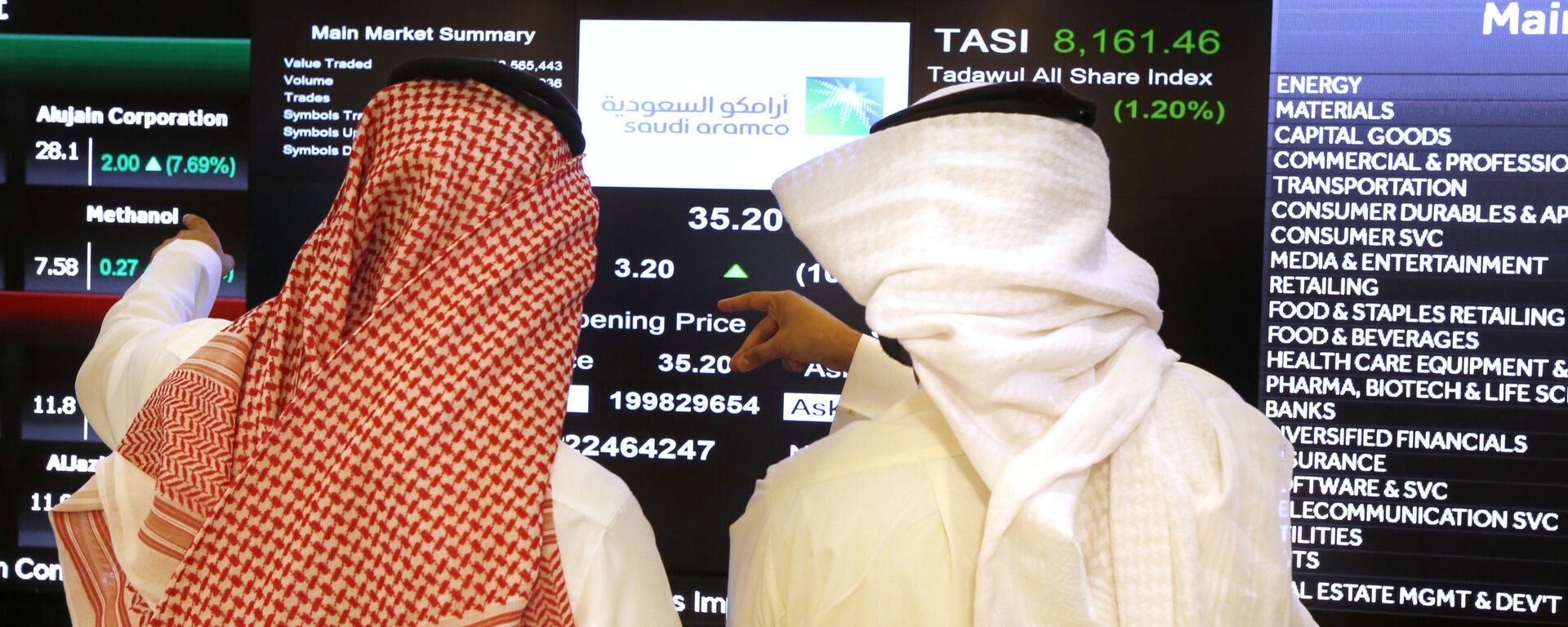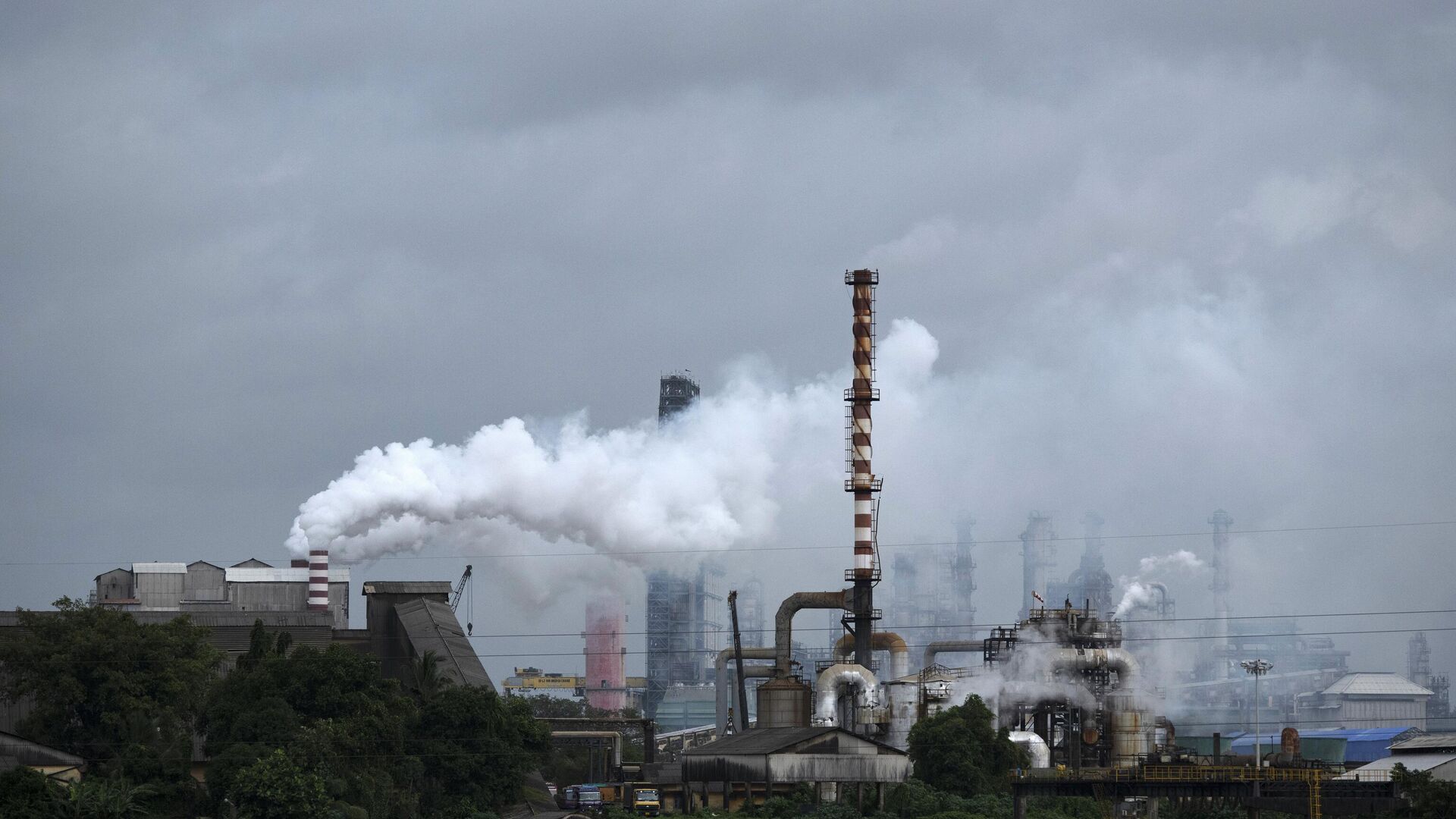https://sputnikglobe.com/20221117/energy-transition-can-come-quickly-if-developed-countries-keep-their-promises---expert-1104318887.html
Energy Transition Can Come Quickly If Developed Countries Keep Their Promises - Expert
Energy Transition Can Come Quickly If Developed Countries Keep Their Promises - Expert
Sputnik International
At COP27 this year, most countries submitted long-term plans to achieve the target of net zero carbon emissions, with primary emphasis lying on introducing... 17.11.2022, Sputnik International
2022-11-17T11:49+0000
2022-11-17T11:49+0000
2022-11-24T10:59+0000
india
hydrogen
fuel
fuel
cop
climate change
global climate
climate
climate
climate
https://cdn1.img.sputnikglobe.com/img/07e6/0b/11/1104329323_0:160:3073:1889_1920x0_80_0_0_60478532267c288f1496658d62c53b70.jpg
As more and more nations are now talking about including green hydrogen in their energy policies, the hydrogen economy may witness significant changes in terms of cost and adaptation in the upcoming years.Among these states is India, which emphasizes the use of green hydrogen, a blend of ethanol in petrol, and a three-fold increase in nuclear capacity by 2032. The nation has not only talked about shifting to green fuel, but it is now in talks with Singapore to export it. What's more, the Indian government is planning a massive expansion of green hydrogen production to cut its dependence on energy imports and to meet climate targets.Sputnik: The Indian government is eager to adopt green hydrogen in the near future. What are the challenges the country could face in adopting it?D.S. Krishnan: The primary challenge for India concerning green hydrogen is to ensure low costs of electrolyzers [and] adequate renewable energy to ensure the greenness of the hydrogen. Meanwhile, the economic impact on sectors will be the primary driver for fertilizers and refineries.Sputnik: Does the goal of bringing the cost of 1kg to $1 by 2023 seem feasible?D.S. Krishnan: This is the goal of almost all green hydrogen regimes worldwide: we have seen technology breakthroughs in the past, coupled with innovative business models. One can hope that this will be achieved.Sputnik: India's output of green hydrogen is currently low, coming mostly from a small number of pilot projects. However, we're actively talking about making green hydrogen our future — are we too optimistic about that?D.S. Krishnan: It is difficult to qualify a target as "too optimistic" or otherwise. Targets are meant to be ambitious and to spur significant, rapid economic development. One should see the parallels with the solar energy sector, which saw enormous growth from a low base.Sputnik: What is your opinion on the export opportunities when it comes to green hydrogen?D.S. Krishnan: This is [about] the memorandum of understanding signed by Greenko Energy. We need to see exports as opportunities that can help grow the manufacturing base in India until the costs of Green Hydrogen are competitive enough to be absorbed into domestic sectors in large volumes.Sputnik: Biomass and electrolyzer are the two primary substances in producing green hydrogen. Do you think India will have to import it, or will it rely on domestic production?D.S. Krishnan: Until the Production Linked Incentive Scheme impacts are announced, it will take some time for domestic manufacturing to come up and build a volume that can cater to domestic and export markets. Till then, some amount of electrolyzer imports may be necessary. We understand that India has sufficient feedstock that would be used as biomass, but we need to work out the logistics and economics to ensure a regular supply.Sputnik: More than $1 trillion in investment is needed to achieve India's latest NDC by 2030. Even after a steep increase this year, India needs three and a half times the current levels to meet its 2030 climate goals and be on track for the 2070 net zero targets.D.S. Krishnan: Yes, the country's targets are ambitious, but India has shown that it can take on these challenges.Sputnik: Despite the big push given to renewable-based energy sources, the demand for coal is projected to increase by 63% to 1.3-1.5 billion tons by 2030, according to the Ministry of Coal. How does India's commitment to cleaner energy correspond with that forecast, especially given that about 70% of India's energy needs are currently met by coal?D.S. Krishnan: As a developing country, India has to achieve its green commitments while ensuring its citizens' development.Given the current cost trajectories, coal usage cannot disappear overnight. But, if technology breakthroughs occur at a rapid pace supported by adequate financing from developed countries according to their promises, India's energy transition can be green quickly.The views and opinions expressed in this interview are those of the expert and do not necessarily reflect the position of Sputnik.
https://sputnikglobe.com/20221026/saudis-say-green-transition-may-take-generation-to-implement-1102670147.html
egypt
Sputnik International
feedback@sputniknews.com
+74956456601
MIA „Rosiya Segodnya“
2022
Deexa Khanduri
https://cdn1.img.sputnikglobe.com/img/07e4/0c/1e/1081607388_0:0:961:960_100x100_80_0_0_e9e931b8c1e18fb41f3074e2145d7a3a.jpg
Deexa Khanduri
https://cdn1.img.sputnikglobe.com/img/07e4/0c/1e/1081607388_0:0:961:960_100x100_80_0_0_e9e931b8c1e18fb41f3074e2145d7a3a.jpg
News
en_EN
Sputnik International
feedback@sputniknews.com
+74956456601
MIA „Rosiya Segodnya“
Sputnik International
feedback@sputniknews.com
+74956456601
MIA „Rosiya Segodnya“
Deexa Khanduri
https://cdn1.img.sputnikglobe.com/img/07e4/0c/1e/1081607388_0:0:961:960_100x100_80_0_0_e9e931b8c1e18fb41f3074e2145d7a3a.jpg
green hydrogen technologies, green fuel in india, energy transition in india, what is green hydrogen, green hydrogen exports
green hydrogen technologies, green fuel in india, energy transition in india, what is green hydrogen, green hydrogen exports
Energy Transition Can Come Quickly If Developed Countries Keep Their Promises - Expert
11:49 GMT 17.11.2022 (Updated: 10:59 GMT 24.11.2022) Deexa Khanduri
Sputnik correspondent
At COP27 this year, most countries submitted long-term plans to achieve the target of net zero carbon emissions, with primary emphasis lying on introducing green hydrogen as well as policies and incentives regarding green fuel in general.
As more and more nations are now talking about including green hydrogen in their energy policies, the hydrogen economy may witness significant changes in terms of cost and adaptation in the upcoming years.
Among these states is India, which emphasizes the use of green hydrogen, a blend of ethanol in petrol, and a three-fold increase in nuclear capacity by 2032.
The nation has not only talked about shifting to green fuel, but it is now in talks with Singapore to export it. What's more, the Indian government is planning a massive expansion of green hydrogen production to cut its dependence on energy imports and to meet climate targets.
Sputnik spoke with Deepak Sriram Krishnan, associate director, Energy, WRI India, to understand how India can gear up for its future demand, export, and its own green hydrogen industry.
Sputnik: The Indian government is eager to adopt green hydrogen in the near future. What are the challenges the country could face in adopting it?
D.S. Krishnan: The primary challenge for India concerning green hydrogen is to ensure low costs of electrolyzers [and] adequate renewable energy to ensure the greenness of the hydrogen. Meanwhile, the economic impact on sectors will be the primary driver for fertilizers and refineries.

26 October 2022, 11:11 GMT
Sputnik: Does the goal of bringing the cost of 1kg to $1 by 2023 seem feasible?
D.S. Krishnan: This is the goal of almost all green hydrogen regimes worldwide: we have seen technology breakthroughs in the past, coupled with innovative business models. One can hope that this will be achieved.
Sputnik: India's output of green hydrogen is currently low, coming mostly from a small number of pilot projects. However, we're actively talking about making green hydrogen our future — are we too optimistic about that?
D.S. Krishnan: It is difficult to qualify a target as "too optimistic" or otherwise. Targets are meant to be ambitious and to spur significant,
rapid economic development. One should see the parallels with the solar energy sector, which saw enormous growth from a low base.
Sputnik: What is your opinion on the export opportunities when it comes to green hydrogen?
D.S. Krishnan: This is [about] the memorandum of understanding signed by Greenko Energy. We need to see exports as opportunities that can help grow the manufacturing base in India until the costs of Green Hydrogen are competitive enough to be absorbed into domestic sectors in large volumes.
Sputnik: Biomass and electrolyzer are the two primary substances in producing green hydrogen. Do you think India will have to import it, or will it rely on domestic production?
D.S. Krishnan: Until the Production Linked Incentive Scheme impacts are announced, it will take some time for
domestic manufacturing to come up and build a volume that can cater to domestic and export markets. Till then, some amount of electrolyzer imports may be necessary.
We understand that India has sufficient feedstock that would be used as biomass, but we need to work out the logistics and economics to ensure a regular supply.
Sputnik: More than $1 trillion in investment is needed to achieve India's latest NDC by 2030. Even after a steep increase this year, India needs three and a half times the current levels to meet its 2030 climate goals and be on track for the 2070 net zero targets.
D.S. Krishnan: Yes, the country's targets are ambitious, but India has shown that it can take on these challenges.
Sputnik: Despite the big push given to renewable-based energy sources, the demand for coal is projected to increase by 63% to 1.3-1.5 billion tons by 2030, according to the Ministry of Coal. How does India's commitment to cleaner energy correspond with that forecast, especially given that about 70% of India's energy needs are currently met by coal?
D.S. Krishnan: As a developing country, India has to achieve its green commitments while ensuring its citizens' development.
Given the current cost trajectories, coal usage cannot disappear overnight. But, if technology breakthroughs occur at a rapid pace supported by adequate financing from developed countries according to their promises, India's energy transition can be green quickly.
The views and opinions expressed in this interview are those of the expert and do not necessarily reflect the position of Sputnik.





